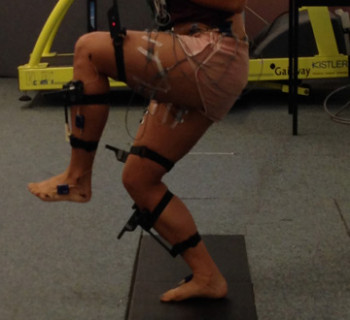Project
Biomechanical correlates of long standing adduction related groin pain in professional and amateur athletes
| Primary Investigator: | Paulina Kloskowska |
| Co-investigators: | Dylan Morrissey |
| Roger Woledge |
Long standing adductor related groin pain (LSARGP) is a troublesome, common and recurrent entity in sports medicine, particularly in athletes involved in rotational sports such as football, rugby or hockey. Most commonly used treatment re exercise-based, which shows good outcomes. Unfortunately, because of the complex anatomy and lack of full understanding of the causes of LSARGP, the exact structures and way they should be rehabilitated is unclear.
The aim of the project is to identify the muscle activation differences between athletes suffering from LSARGP and healthy controls during simple functional tasks. Furthermore, we intend to observe their movements and see whether athletes with pain move differently to the ones that are healthy.
To achieve that we collect the muscle activation and kinematic data of the lower limb using the surface electromyography (sEMG) electrodes and CodaMotion capture system markers attached to participant's body.
We collect data from 12 muscles and all of the joints of the lower limb during simple movements challenging the pelvis and hip joints: bending the hip while standing on one leg, one legged squat and straight leg raise.
We have already collected data from nearly 100 professional and amateur athletes participating in rotational sports.


